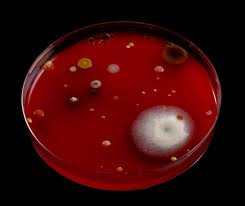Microorganisms
are known to survive on inanimate ‘touch’ surfaces for extended periods of
time. This can be especially troublesome in hospital environments where
patients with immunodeficiencies are at enhanced risk for contracting
nosocomial infections.
Touch
surfaces commonly found in hospital rooms, such as bed rails, call buttons,
touch plates, chairs, door handles, light switches, grab rails, intravenous
poles, dispensers (alcohol gel, paper towel, soap), dressing trolleys, and
counter and table tops are known to be contaminated with Staphylococcus,
Methicillin-resistant Staphylococcus aureus(MRSA), one of the most virulent
strains of antibiotic-resistant bacteria and Vancomycin-resistant Enterococcus
(VRE). Objects in closest proximity to patients have the highest levels of
staphylococcus, MRSA, and VRE. This is why touch surfaces in hospital rooms can
serve as sources, or reservoirs, for the spread of bacteria from the hands of
healthcare workers and visitors to patients.

No comments:
Post a Comment